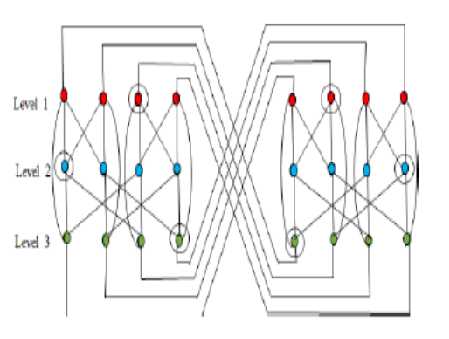


Indian Journal of Science and Technology
DOI: 10.17485/IJST/v16iSP3.icrtam211
Year: 2023, Volume: 16, Issue: Special Issue 3, Pages: 8-13
Original Article
M Joice Punitha1, E F Beulah Angeline2*
1Department of Mathematics, Bharathi Women’s College (Autonomous), Affiliated to the University of Madras, Chennai-108, Tamil Nadu, India
2Department of Mathematics, Nazareth College of Arts and Science, Affiliated to the University of Madras, Chennai-62, Tamil Nadu, India
Received Date:05 February 2023, Accepted Date:11 August 2023, Published Date:20 November 2023
Objectives: For a given graph with proper coloring, the problem of selecting a dom-coloring set is to choose a dominating set having a property that it has a minimum of one vertex from every possible color class in . Our aim is to determine the family of networks that allow dom-coloring and to find its dom-chromatic number denoted by . Method: We have applied the algorithmic method of choosing the dom-coloring set(dc-set). Here we have designed a coloring algorithm to yield the proper coloring for the vertices of the graph. D-set algorithm has been developed to determine the dominating set for the given graph. Then, the dc-set for the graph is obtained by applying the above two algorithms. Findings: In this study, we have established the study on finding the dc-set of wrapped butterfly network and bloom graphs. Further, we have found the dom-chromatic number of the above-mentioned graphs. Novelty: Dom-coloring is an extended variation of graph coloring and domination which has emerged as a result of the combination of the two broad concepts in graph theory namely, domination and coloring. A dominating set which includes a minimum of one vertex from all possible color classes of the graph forms a dom-coloring set. In this paper, a study on dom-coloring of wrapped butterfly and bloom graphs have been accomplished. These results may be generalized for butterfly derived networks to determine its dom-chromatic number.
Keywords: Dominating set, Domination, number, Coloring, Chromatic number, Domcoloring set, Domchromatic number 1
© 2023 Punitha & Angeline. This is an open-access article distributed under the terms of the Creative Commons Attribution License, which permits unrestricted use, distribution, and reproduction in any medium, provided the original author and source are credited. Published By Indian Society for Education and Environment (iSee)
Subscribe now for latest articles and news.